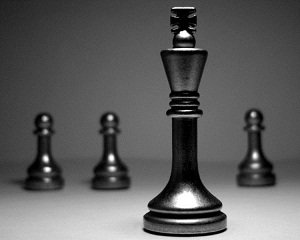Faisal Wali

Tan Jee Say (in suit) posing with supporters and friends outside the Election Department
Political observers yearning for an actual Presidential electoral contest will be hoping that all the presidential candidates intending to contest will receive their certificates of eligibility.
If the Elections Department has to disqualify candidates, well at least they should leave behind Dr Tony Tan and Mr Tan Jee Say. Why so? Because the outcome of contest is a better reflection of PAP versus non-PAP support in comparison with polling during the General Elections.
Circumstances of the 1993 Presidential elections, the last time we had an election, bears important lessons for us. The contest pitted Mr Ong Teng Cheong, a candidate with previous background in PAP against a reluctant candidate, former Accountant General Mr Chua Kim Yeow. Ong had a similar career history in cabinet as Tony, serving as cabinet minister and deputy prime minister.
During the campaign, Chua conceded that Ong was a more superior candidate. To top that, Chua never bothered campaigning, though he addressed the electorate in two 10 minutes broadcasts over TV. Ong, on the other hand, enjoyed backing from then Prime Minister Goh Chok Tong who encouraged Singaporeans to vote for him.
Unlike Chua, Ong was more serious about his campaign, forking out $50,000 – $60,000 of his money into the venture. Best of all, Ong had the backing of the National Trade Union Congress (NTUC) , where 230,000 of its members were mobilised to canvass at least 5 votes each for him.
One would expect Chua to suffer a huge margin defeat as it appeared that the odds were hugely stacked against him. The outcome, however, was a respectable margin for Chua. He attained a 41.3% to Ong’s 58.7%. This is in context of an era in which PAP enjoyed greater support.
Why is the Presidential election a better reflection of PAP versus non-PAP support, despite the official rule of non-alignment with political entities?
This is because there are factors affecting voters’ decision during General Elections that are absent during Presidential election.
Residents casting their votes during General Elections may have concerns over residential programmes and issues. This will be factored into their final voting decision. One good example of such a programme is upgrading, especially for the older generation Singaporeans. It is more convenient for them to have a lift at every floor, and they will benefit from a lift upgrading programme in place.
Hence, the continuity or materialisation of such residential programmes will be weighed into the voting decision. Upgrading issues aside, the Presidential elections is free from any form of electoral handouts. There is no similar package like Grow and Share to be doled out to the electorate to sway their votes.
So, there are factors placing the PAP into an advantageous position which disappear during the Presidential contest. This is why despite being endorsed by a PAP leader in the form of Prime Minister Goh, and backed by establishments like NTUC with close PAP links, Ong only managed to score 58.7%.
Today, Tony finds himself in the same shoes as Ong. The ground for PAP has eroded over the years. Some observers are predicting 60% of votes going to Tony, similar to the PAP-opposition margin for the recent General Elections.
However, the equation is completely different for the Presidential contest. There is no upgrading, communal and residential programmes that will sway voters. Neither is there any electoral handout. Furthermore, the ground support for PAP has eroded since 1993.
Thus, under such circumstances, it will be a very good achievement for Tony if he can achieve Ong’s 58.7%. His rivals are no Chua Kim Yeow, and have embarked on active campaigns. They have wasted no time harnessing support through various mediums, including the new media, a move that Tony himself embraced. Tony is not up against reluctant candidates, but ones who are serious about the Presidential contest.
Now, all that is left is for the elections department to issue the certificates of eligibility. If the department must eliminate candidates, at least, leave behind Tan Jee Say and Tony.
Make no mistake, the Presidential contest offers a better reflection of PAP versus non-PAP support. There is no absolute guarantee that a PAP-backed candidate will win 60% of the votes, as history has shown.
—
Photo courtesy of Channel News Asia.


For such a conclusion to be true, it is necessary to assume that voter considerations for the role of parliament and the president is the same. This may not be true. In specific, it is not impossible for someone who disregards election programmes such as HDB upgrading to say, I’d vote a PAP candidate into parliament because an MP is crucial in determining the country’s future, but I’d vote a non-PAP-backed candidate as a president because a president does not have much space to screw up the country.
Such a voter would, I imagine, come from the swing voter category. And it may account for some of the stark discrepancy in the 1993 Presidential Elections and the PAP support then.
In short, the presidential election will offer a different, but not necessarily better, reflection of PAP and non-PAP support.
@ Jackson, that would depend on whether Singaporeans vote by PAP-opposition tinted glasses for the presidential elections. In singapore with the mass media and all that, it is quite easy to perceive politics as pap versus non-PAP.
After all, even PAP leaders are throwing their weight behind Tony. THere is already polemisation of the contest between PAP and non-PAP.
I the mind of voters:
Tan Kin Lian= check and balance
Ta Jee Say= check and balance
Tan Cheng Bok= check and balance
Where is Tony Tan in the equation…..?
No need to check, PAP system balances even upside down on its own head !!!????